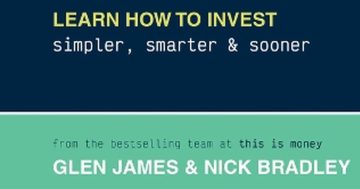Rachel Parnes* offers advice on how to start thinking and acting more strategically at work.
 Maybe in your most recent review, your boss said they wanted you to work on your “strategic mindset.”
Maybe in your most recent review, your boss said they wanted you to work on your “strategic mindset.”
So naturally, you nodded, smiled, said you’d get right on that.
Then you went back to your desk, and… googled this article.
First thing’s first: don’t panic! The request to become more strategic might sound vague or even intimidating.
But in reality, it’s one of the most valuable steps you can take to advance your career.
And if you’re being asked to improve these skills, it’s a sign that your company sees real potential in you.
What does it mean to “be more strategic”?
When you’re starting out, you probably spend most of your time trying to figure out how to do your job functions, but not why you’re doing it.
We call this “tactical thinking.”
As Professor Dorie Clark pointed out in her course on Strategic Thinking, as you’re promoted, “you stop being evaluated on whether you can implement a task or a project and you start being asked to conceptualize it, and make determinations about what’s valuable for you, the company, and other employees to be spending their time on.”
That difference between implementing a task or project and conceptualizing a project of your own reflects the difference between tactics and strategy.
Being strategic means you’re the one who thinks about the whats and whys, not just the hows.
Instead of receiving someone else’s directions on a project and then implementing them, you come up with those directions on your own, in accordance with the broader goals and priorities of the business at large.
Why does your boss want you to be more strategic, anyway?
This is why being told you should “be more strategic” isn’t a bad thing!
It’s a sign of the faith your organization is placing in you: you’re ready to stop focusing exclusively on tasks and production, and start taking on strategic leadership of your own to make a real impact on the business.
There’s even better news, too: learning to develop a strategic mindset won’t just help you in your current role.
It’s absolutely essential for rising through the ranks on virtually any career track.
The more responsibility you have, the more your organization will be looking to you for the big ideas – and the more you’ll be coveted by other organizations.
How to develop a strategic mindset
Okay, great, so now you know what strategic leadership and a strategic mindset are.
How do you go about actually developing them?
Well, thanks to Pete Mockaitis and Stacey Boyle’s course on How to Be More Strategic in Six Steps, we have a step-by-step roadmap.
Step #1: Get to know your organization’s big picture
Boyle summarized this step fast: “It’s up to you to understand what your organization is trying to accomplish and how you can help them accomplish that.”
Start by rolling up your sleeves and committing to a whole lot of new learning.
“You should definitely know your company inside and out,” Boyle explained.
“We always say, you need to be at least as well informed about your company as your customers are.”
Step #2: Put yourself in the big picture
Now that you know the 10,000-foot view, zoom in until you find your place in it.
“That’s where strategy comes in,” Boyle said.
“Understanding what your corporation does down to what your department does and how you contribute to the strategy that drives the vision.”
How does your department contribute to the organization? How do you contribute to your department? Answer these questions as completely and specifically as you can – but if you come up short, don’t worry.
You may have just discovered an opportunity.
Step #3: Engage and partner with key stakeholders
You can’t truly think strategically in isolation.
This next step is about making sure you don’t have to.
“Be sure you have supporters as you develop professionally,” Boyle explained.
“If people do not know who you are, and other leaders don’t know who you are and what you do, you won’t survive.”
Find and network with other strategic thinkers inside your organization.
Start asking other department heads questions.
See if you can collaborate on an upcoming project or if they have any advice for you on your journey.
This won’t just help you learn how to be strategic that much faster; it will also win you allies and mentors that can help you the rest of the way.
Also, if you’re asking these questions and showing this initiative, higher-ups will likely take notice.
Step #4: Build the plan – and start with why
The biggest difference between building a strategic plan and building a tactical plan is that in a strategic plan, “purpose dominates method.”
“Start with why you’re trying to do this – the purpose of what you’re doing – then decide the methods,” Boyle advised.
Finding this purpose is where all your strategic learning pays off.
What’s your organization’s goal? How do you contribute to it? How can you contribute to it now? How can you take steps to make a bigger impact?
Again: take a step back and look at the big picture.
Envision a future state for one year, or even five years, and then formulate a concrete plan to get there.
Step #5: Make your case
How are you going to show your organization that your strategy is worth pursuing? Documentation and detail are your best friends.
“Do you have any particular checklists, frameworks, considerations that you go to again and again to make wise decisions?”
Imagine your boss is going to ask you “why” every time you mention a strategic decision.
What will you use to convince them? Start building that now.
Ask your stakeholders for help!
Step #6: Lead with the headline
You’ve come this far.
It’s time to present your strategic plan.
Whatever you do, don’t fall back to tactics now.
“People want the headline,” Boyle explained, “so give them the headline.”
In your strategic leadership role, always start with the overarching “why” behind the strategy.
Why does this matter? Why is it exciting? What’s it going to change?
“They want to know the answer to their business question,” Boyle said, “You do that upfront, and that’s being strategic.”
Put another way: if you want to lead, don’t bury the lead.
Next time the opportunity presents itself, show your boss your new strategic mindset in action.
Schedule some time to talk to them about where you are now, where you’d like to be, why you think it would help the organization to get there, and what you’re prepared to do to make it happen.
*Rachel Parnes, Senior Marketing Manager at LinkedIn.
This article first appeared at linkedin.com.











